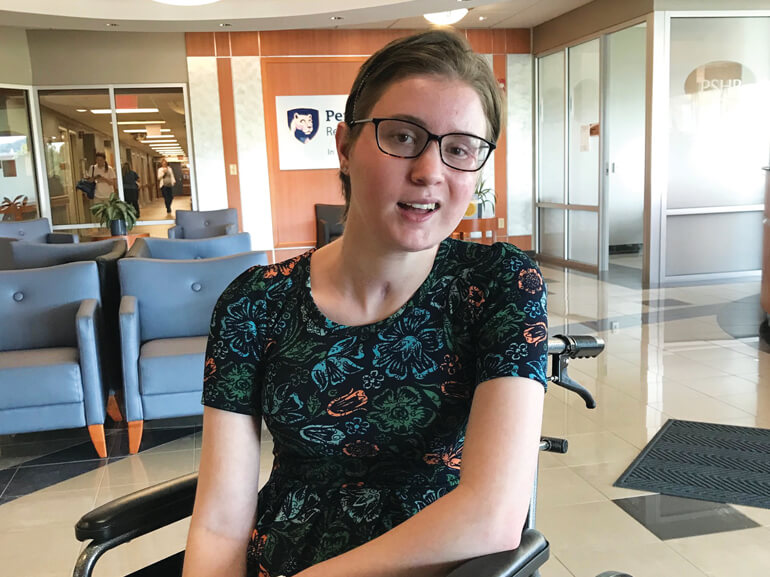Ashton's story

Returning home with confidence
“A parent’s worst nightmare... getting the call that your child has been flown to the hospital with life threatening injuries. The call came in at 3:44 p.m. on January 18, 2019,” recalls Amber Nappier. Her 21-year-old daughter Ashton was severely injured in a motor vehicle accident.
“The voice on the phone kept running through my mind, said Amber. “Ma’am, we have your daughter here...(long pause) and it’s very serious… that’s all I can tell you.’ The drive from our home in Westminster, Maryland to Baltimore was the longest trip we’ve ever had to endure. Is she still alive? Will she be okay?”
That was just the beginning of the Nappiers’ journey. Ashton sustained a traumatic brain injury and other extensive injuries including: internal bleeding; broken pelvis, jaw, orbital bone and left rib; lacerations to her liver, spleen, eye, cheek and chin; and many broken or missing teeth – one aspirated into her left lung. The brain injury required the insertion of a breathing tube and associated ventilator, allowing Ashton to breathe. She also required a feeding tube and a monitor to measure the pressure within her skull.
Given Ashton’s lack of medical and functional progress, she was initially transferred to a skilled nursing facility in February for further care but quickly readmitted to the hospital in March with respiratory distress. Once stabilized, she made slow progress and became eligible for inpatient rehabilitation.
Ashton’s parents didn’t want her languishing in a nursing home, they did extensive research and chose Penn State Health Rehabilitation Hospital (PSHR) since it specializes in helping brain injured patients recover.
Ashton was admitted to PSHR in late March and required assistance for all of her needs from getting in/out of bed, standing, dressing, toileting and walking. Still also remained on a feeding tube as she was unable to eat or drink through her mouth.
PSHR’s care team went to work, creating a customized intensive care plan to guide Ashton’s recovery.
Her primary goal was to dine with her friends, she also yearned to get home to her dog, Palmer. With these goals in mind, Ashton put in the effort and after a few days, therapists and family noticed she was progressing. It started simply enough, she sat up in bed when her therapists walked into the room. From there, she pushed hard in physical, occupational and speech therapy. She gradually began to tolerate a regular diet moving from broths to thicker liquids. She attempted walking, climbing steps and soon began communicating with sign language and facial expressions.
By the time she left, the young woman who couldn’t open her eyes during admission was now smiling and laughing -- her sense of humor shining through.
Therapists continued working with Ashton, assisting her with weight bearing activities to strengthen her muscles. Most importantly, her care team provided family training and education, helping everyone learn how to safely assist Ashton when she returned home – allowing everyone to feel comfortable and confident.
While Ashton has begun to walk and talk, her progress will continue over time. Happy with her advancement, she is still working to have dinner with her friends and setting some new goals too.
Ashton discharged from PSHR to her parent’s home in May. She rolled out in a wheelchair with her mom noting, “It’s just for now. She has a goal to return to rehab in November walking through the front door to visit and sharing her progress. We (and everyone who supported us) have been shocked at her progress. The team at PSHR was critical to her recovery.”
Ashton continues outpatient therapy twice a week.